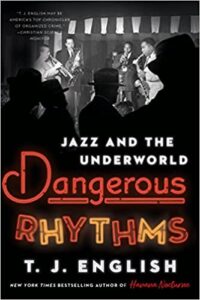CrimeReads editors select the best new nonfiction crime books from September and August.

Barbie Latza Nadeau, The Godmother: Murder, Vengeance, and the Bloody Struggle of Mafia Women
(Penguin)
Barbie Latza Nadeau’s new study brings us inside the mafia clans of Italy to draw a revealing portrait of the women who prop up these family structures, and who sometimes build power bases of their own, to violent ends. The book is in large part the story of Pupetta Maresca, the Naples woman who, at eighteen, avenged her husband’s gangland murder, served time in prison, and later became a media sensation. But The Godmother is also about the largely misunderstood role women play in organized crime in Italy, and what that role reveals about contemporary society. –DM

Greg King, Penny Wilson, Nothing but the Night
(St. Martin’s)
In this compelling historical narrative, King and Wilson reexamine one of the nation’s most famous cases and come up with an alternative interpretation of the relationship between Leopold and Loeb. They also offer a vivid sketch of Clarence Darrow, the lion of the American bar, finding a complex humanity that drove him toward the case and into one of the most celebrated summations in the annals of American jurisprudence. –DM

Beverly Lowry, Deer Creek Drive: A Reckoning of Memory and Murder in the Mississippi Delta
(Knopf)
In Beverly Lowry’s hometown, when she was a small child just beginning to learn the horrific history of the American South, an elderly white woman known for being hateful was murdered with great violence. Her daughter tried to blame the crime on a Black man, but was instead put on trial herself—he attack was too brutal and lengthy for the townsfolk to ascribe such violence to the vulnerable Black community; what’s more, the daughter was suspected of a too-close relationship with a schoolteacher and this, combined with her mannish courtroom outfits, signaled her to be a gender rebel and thus a probable murderess. The daughter found herself convicted, but unending support from her loving husband (the contra-indicator for her suspected lesbianism) and the class differences between this upper-class wife and mother and her lower-class prisonmates eventually convinced the governor to secure her release back into the community that had so rejected her during the trial. –MO

Andy Kroll, A Death on W Street
(PublicAffairs)
In 2016, a young DC staffer named Seth Rich was killed on his way home from work. The death was presumed to be in connection with a robbery, but when no arrests were made, a world of online conspiracy theorists and propaganda operatives stepped in with an elaborate lie about the Clinton family and a criminal coverup (and some much stranger, dark theories, of course). In Kroll’s new book, he chronicles Rich’s real life and death, as well as the dark forces that interrupted his family’s grief and made their tragedy into an online fascination and a hideous, dangerous distortion of reality. –DM

Joe Pompeo, Blood and Ink: The Scandalous Jazz Age Double Murder That Hooked America on True Crime
(William Morrow)
The 1922 murder of a prominent reverend and a woman from the church choir serves as the basis for Pompeo’s Blood & Ink, which takes a fresh look at the grisly murder. A new media landscape was emerging at the time of the crime, and Pompeo does an admirable job of linking up the mystery to the wider cultural forces at play. –DM

Kathleen Hale, Slenderman: Online Obsession, Mental Illness, and the Violent Crime of Two Midwestern Girls
(Grove Press)
Kathleen Hale initially wrote about the Slenderman case for Hazlitt, an article that still stands out from the general sensationalist coverage of the case for its enormous empathy for all involved. When two middle schoolers stabbed another middle schooler in the woods in 2012, they claimed to do it on behalf of a mysterious figure known as Slenderman. Hysterical parenting sites spread a moral panic about CreepyPasta, the website where stories of Slenderman originated and then became memes, but undiagnosed schizophrenia, midwestern stoicism, and intense friendship dynamics are much more to blame for the attack, as Kathleen Hale illustrates in both the original article and now a full-length title. –MO

T. J. English, Dangerous Rhythms: Jazz and the Underworld
(William Morrow)
T.J. English’s newest slice of American noir culture is a sweeping history of the long, entangled tradition of jazz and organized crime, from the early days of Storyville, with Black performers and Sicilian club owners operating a complicated network of protection, endorsement, exploitation, and wild, creative invention. In cities across America, jazz musicians often found their homes in connected clubs and performing venues. Some believed it was to their benefit, but as the century rolled on, divisions within the arts community began to spread, as some musicians no longer wanted to play along for the mobsters who had a taste of their careers and profits. So in the end, the story becomes a distinctly American one, of course: of racial inequality, economic injustice, and the immortal art form that sprang from this hotbed of corruption and striving. –DM




















